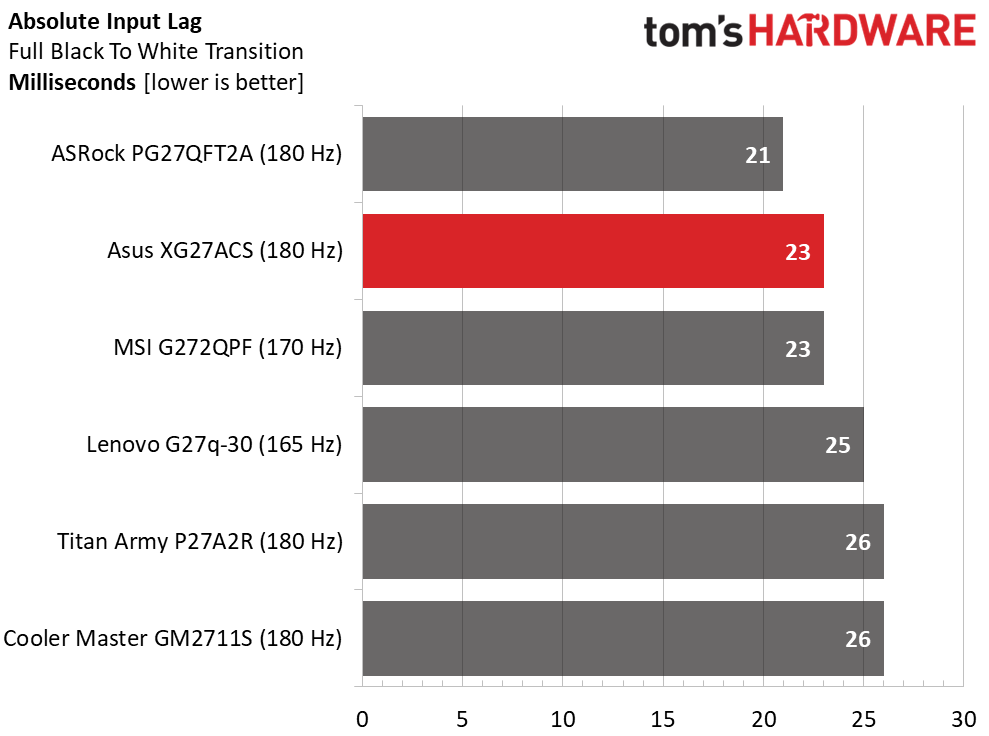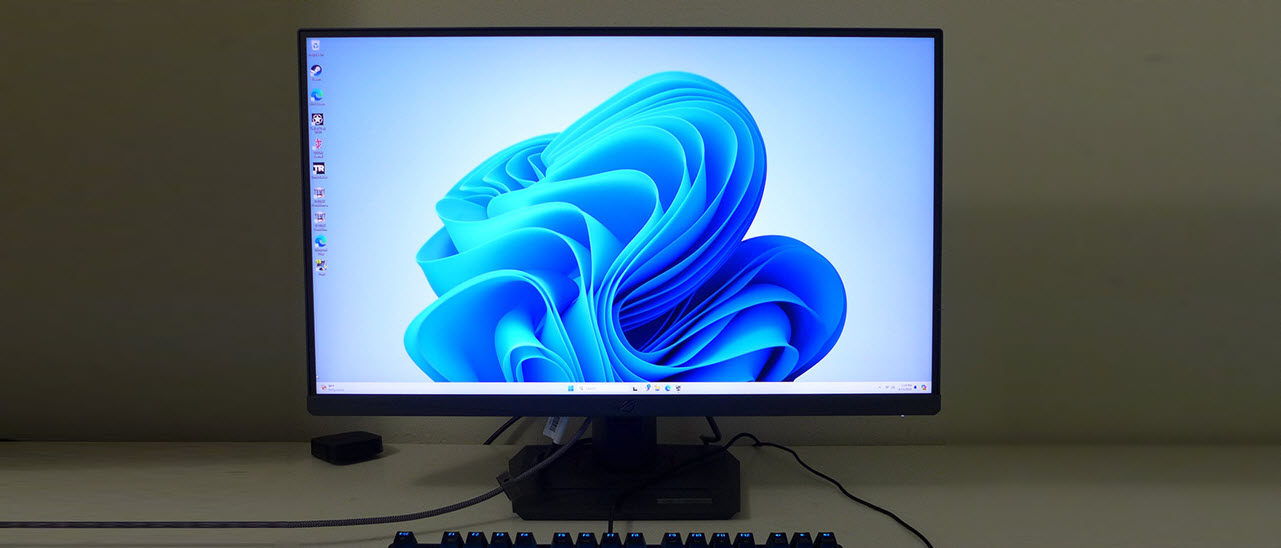Why you can trust Tom's Hardware
The XG27ACS brings the total of 27-inch QHD 180 Hz screens in my database to four. I’ve brought in ASRock’s PG27QFT2A, Titan Army’s P27A2R and Cooler Master’s GM2711S. To make it six, I’ve added Lenovo’s 165 Hz G27q-30 and MSI’s 170 Hz G272QPF.
Pixel Response and Input Lag
Click here to read up on our pixel response and input lag testing procedures.


In the screen draw test, all panels post the same 6ms draw time for a full black to white transition. The differences between them are subtle and come down to the quality of overdrive. The XG27ACS has the best of the bunch, with its greater precision and flexibility. 20 OD levels plus multiple ELMB options put it over the top. You are guaranteed to find the right balance with this monitor.
The XG27ACS responds speedily to control inputs with 23ms of total input lag. It’s equaled by the MSI and just pipped by the ASRock. The differences from bottom to top here are small with only 5ms separating the entire field.
Test Takeaway: 180 Hz is only 15 more than 165 Hz but the XG27ACS delivers more with its superb video processing. It is more than worth a few extra dollars for that feature alone. The only way gaming could be better is with a much faster monitor. 240 Hz would be the next starting point, or an OLED. But for $300, you won’t find better.
Viewing Angles
The XG27ACS is one of the better IPS panels I’ve photographed. At 45 degrees to the sides, there is a slight shift to blue and just a 10% reduction in light output. Gamma is constant, meaning there will be no loss of fine detail in actual content. The top view shows hints of red and green with a 50% drop in brightness and a moderately washed-out image due to lowered gamma. In the IPS realm, this is excellent performance.
Screen Uniformity
To learn how we measure screen uniformity, click here.
Get Tom's Hardware's best news and in-depth reviews, straight to your inbox.
Screen uniformity is no problem for the XG27ACS. I noted a slight center hotspot in the measured values, but I could not spot this issue in content. Color was visually perfect from edge to edge as well. There are no flaws worthy of concern here.
MORE: Best Gaming Monitors
MORE: How to Buy a PC Monitor
MORE: How to Choose the Best HDR Monitor
Current page: Response, Input Lag, Viewing Angles and Uniformity
Prev Page Features and Specifications Next Page Brightness and Contrast
Christian Eberle is a Contributing Editor for Tom's Hardware US. He's a veteran reviewer of A/V equipment, specializing in monitors. Christian began his obsession with tech when he built his first PC in 1991, a 286 running DOS 3.0 at a blazing 12MHz. In 2006, he undertook training from the Imaging Science Foundation in video calibration and testing and thus started a passion for precise imaging that persists to this day. He is also a professional musician with a degree from the New England Conservatory as a classical bassoonist which he used to good effect as a performer with the West Point Army Band from 1987 to 2013. He enjoys watching movies and listening to high-end audio in his custom-built home theater and can be seen riding trails near his home on a race-ready ICE VTX recumbent trike. Christian enjoys the endless summer in Florida where he lives with his wife and Chihuahua and plays with orchestras around the state.
-
Tennberg Thanks for a great review. Currently putting together the first new build in ages and the monitor is the last item to get. Truly overwhelmed with what's out there. Looking at 27" IPS 1440p monitors for a 3070 Ti. Between this, the PG279QM, and XG27AQMR, which one would you recommend?Reply -
Dr D00p Last time I was looking for a monitor, in 2018, these were the premium level specs, commanding a $700 to $800 entry fee.Reply


